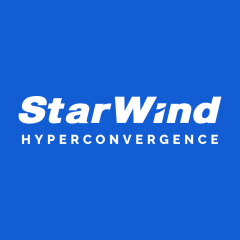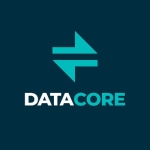What is our primary use case?
We added vSAN capability for Hyper-V. We had a three-node standalone that used Microsoft Hyper-V and we wanted to convert them into a hyper-converged solution instead of formatting the servers and losing the windows licenses and installing VMware with the high cost of licenses (especially since we have two CPU sockets on each host).
We used StarWind Virtual SAN with was a cheaper solution while leveraging the existing all-flash standalone servers.
The installation of StarWind Virtual SAN was pretty easy, and the configuration was done in no time.
How has it helped my organization?
We were looking for a cheap vSAN solution that worked with Hyper-V. StarWind Virtual SAN gave us the capability to have shared storage between hyper-v hosts without buying external storage or using VMware instead of Hyper-V.
Using this solution improved our organization to take advantage of existing servers while we had a very low budget.
While we have a worldwide issue in the supply chain of servers, this was a very essential solution that helped the organization meet the application team requirements for the new solution installed.
What is most valuable?
We can turn Windows Hyper-V nodes into a hyper-converged solution.
I like the high availability and redundancy of the Hyper-V nodes.
This solution does not have any specific hardware or disk requirements that can be found in VMware, for example.
The solution was very easy to use and configure the three-node failover cluster - and you do need to configure the multipath and the network interfaces prior to the StarWind software installation.
It provided a way for replicating data and a way to have HA, which was very straightforward to set up.
What needs improvement?
The documentation is good. However, if compared with competitors, it could be enhanced and made more professional.
Other products like VMware vSAN have a bigger user base and more forums. It will take more customers to use Starwind Virtual SAN to change this. For example, You can find more PowerShell scripts on internet forums, and GitHub related to PowerCLI (VMware) than you can find StarWindX Powershell scripts.
Reporting capabilities of StarWind vSAN are also limited compared to VMware, which is considered a more mature product in the market.
For how long have I used the solution?
I've used the solution for six months.
What do I think about the stability of the solution?
It's been so far, so good regarding stability (we've had no issues).
What do I think about the scalability of the solution?
The performance provided by the solution is good for SMBs and specific departmental solutions.
Which solution did I use previously and why did I switch?
We are using VMware vSAN on other solutions, and we are still using it, however, it is better to use VMware only as a hypervisor (obviously). Also, the hardware requirements are very costly to be compliant with, while using StarWind Virtual SAN there are no hardware or hypervisor requirements.
How was the initial setup?
The initial setup is straightforward and easy to perform.
What's my experience with pricing, setup cost, and licensing?
The setup is pretty easy for any mid-senior administrator.
StarWind Virtual SAN is a cost-effective solution.
Support also is very good.
Which other solutions did I evaluate?
We evaluated the following other options:
- Using traditional architecture by buying external storage and connecting it to the three existing nodes
- Using a VMware solution. However, this will lead to losing the Microsoft licenses, and VMware costs more than StarWind Virtual SAN
What other advice do I have?
It is good to have diversity in this market, and StarWind Virtual SAN is a good solution.
Which deployment model are you using for this solution?
On-premises
Disclosure: My company does not have a business relationship with this vendor other than being a customer.

















